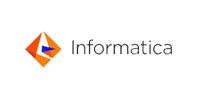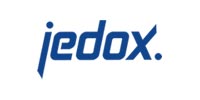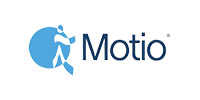Software development
In our modern Software Factory in Basel, we develop tailor-made IT solutions that are completely adapted to your personal requirements and goals. Overall, we cover all phases of software development. In doing so, we benefit from many years of experience and numerous successfully completed projects for a large number of customers from Switzerland and beyond. The range of tasks is divided into four central areas: Architecture and Design, Data Modeling, Integration, and Web and Client Development.
An overview of your personal advantages
✔ You get all services from one source
✔ High quality and reliable execution of all projects
✔ Competent consulting for all questions during the development process
✔ Software solutions and web development tailored to your individual requirements and respective goals
Areas of software development
Architecture and design
At the beginning of each project for our customers is always the determination of the appropriate target architecture. This is based entirely on your individual requirements and needs. Existing operational requirements also have an impact on this process. First, we define the IT architecture and then, in a second step, we determine the technical design for it. The architecture and the technologies used are largely independent of each other. To further specify the architecture, the Unified Modeling Language (UML) is almost always used.
Data modeling
In most cases, persistent storage of enterprise data is required. It is about the schematic representation of data flows. Modeling the associated database is one of the central tasks in the development of an individual solution in the IT sector. Modeling ensures consistent data storage and at the same time powerful data access.
Modeling begins with a descriptive diagram that shows the data flow and the database at a glance. The characteristics of the data formats, structures and database processing functions then emerge from this flowchart. In this way, data flow requirements can be efficiently supported. Even after the database has been completed, the diagram remains as documentation. The aim is to illustrate all the data types stored and used, as well as the relationships between them and how they are grouped. They are based on the respective business requirements.We not only have special expertise in modeling data storage for evaluations alone, but also in solutions for sensitive business data. The central issue here is often a suitable translation of technical data models into a user-friendly access layer, which then enables users to easily handle the program or system.
Integration
Business applications are never operated in isolation, but are linked to other internal or external systems. A smaller unit is thus integrated into the larger whole, or different modules are incorporated into a larger system. It is then possible to access a single database across different applications. Functional integration, data integration and business process integration are to be distinguished from each other. We support you in the integration of new as well as existing systems, be it via the introduction of an Enterprise Service Bus (ESB), via a micro service approach or via point-to-point system connections. We also make targeted use of special tools from the field of data warehousing, which are designed for mass data processing. Furthermore, we realize individual solutions for you, which are optimally integrated into the existing IT landscape. Thus, data and processes can be integrated quickly within the company.
Web and client development
The user interface represents the interface between the system and the users and must therefore be developed with the utmost care. This includes software development of web applications, web services and complex websites. We also carry out maintenance and subsequent optimization of already existing websites with profound expertise. End users should be optimally supported in their work and business processes in the company should be maximally accelerated and simplified in this way. Native languages such as Java, .Net, Python and C# are used for the realization. In many cases, the use of suitable frameworks and libraries accelerates the implementation of web and client development. Advantages include reliable distribution of all data and transactions as well as central data security. The processing of large databases takes place with very high speed and scalability. Furthermore, the optimal desktop integration and the open interoperability have an advantageous effect.
Why software development?
Scalability: Software can be easily adapted to increasing requirements and user numbers without the need to greatly expand physical resources.
Automation: Software can automate many manual tasks and repetitive processes and minimize human error. This saves time, resources and costs and thus increases efficiency.
Competitive advantage: companies that use innovative software solutions can differentiate themselves in the market and gain a competitive edge.
Better decision-making: software can collect, analyze and present data, leading to informed decisions.
Improved customer relationships: Software can enable seamless interactions with customers, streamline customer service, and provide personalized experiences.
Time savings: software can enable tasks to be completed faster, leaving more time for other important activities.
Flexibility: software development enables applications to adapt to changing requirements and be continuously improved.
Innovation: Software can provide new capabilities and functions that would not be possible without it.
Global accessibility: By making software available via the Internet, users around the world can access it.
Standardization: software development enables processes and procedures to be standardized, which improves quality and consistency.
Security: Software can help improve security by controlling access rights and using data encryption.
Better error detection and resolution: the use of software can detect and resolve errors and problems more quickly.
Documentation: software can serve as an efficient form of documentation to store processes and information.
Efficient collaboration: Software can facilitate collaboration between team members, regardless of their location.












